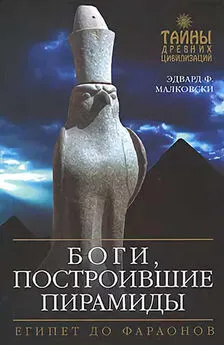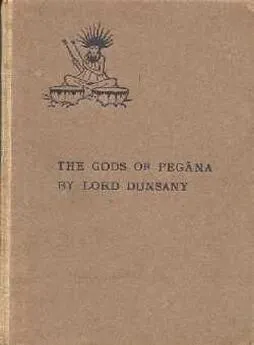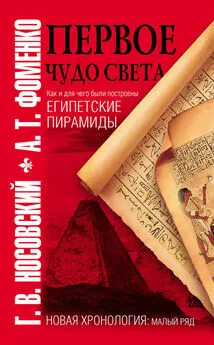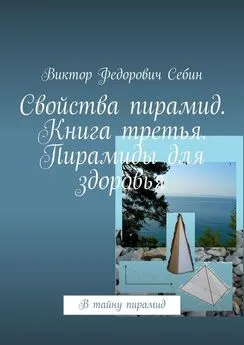Эдвард Малковски - Боги, построившие пирамиды
- Название:Боги, построившие пирамиды
- Автор:
- Жанр:
- Издательство:Эксмо
- Год:2008
- Город:М.
- ISBN:978-5-699-25819-2
- Рейтинг:
- Избранное:Добавить в избранное
-
Отзывы:
-
Ваша оценка:
Эдвард Малковски - Боги, построившие пирамиды краткое содержание
Для объяснения этого феномена многие исследователи от отчаяния пытаются использовать теорию посещения Земли инопланетянами или обосновывают существование других фантастических существ вроде всемогущих атлантов. Однако американский историк Эдвард Малковски, тщательно изучивший все гипотезы и версии, посвященные древним мегалитическим сооружениям, пришел к неожиданному выводу: вовсе не обязательно искать доисторическую сверхцивилизацию на других планетах или на дне океана. Достаточно внимательнее присмотреться к некоторым регионам земного шара, история которых, казалось бы, изучена вдоль и поперек…
Значительная часть сведений, касающихся древнейшей человеческой сверхцивилизации, сокрыта в устных традициях и мифических преданиях. Используя новейшие данные археологии, генетики и геологии, а также священные религиозные тексты. Малковски доказывает, что в основе мифических преданий лежат вполне реальные исторические события.
Боги, построившие пирамиды - читать онлайн бесплатно полную версию (весь текст целиком)
Интервал:
Закладка:
156
The Mystery of the Cocaine Mummies, Equinox-Channel 4 and the Discovery Channel, September 8, 1996, documentary.
157
Ibid.
158
Ibid.
159
Ibid.
160
Ibid.
161
Lawrence Gustave Desmond and Phyllis Mauch Messenger, A Dream of Maya: Augustus and Alice Le Piongeon in Nineteenth-Century Yucatan (Albuquerque: University of New Mexico Press, 1988). (Web version available at: http://maya.csuhayward.edu/archaeoplanet/LgdPage/Dream/Start.htm.)
162
A Dream of Maya (quote from Vestiges of the Mayas, New York, J. Polhemus, 1881), 16.
163
Desmond and Messenger, A Dream of Maya, chapter 4.
164
Ibid, chapter 11.
165
A Dream of Maya, quote from «Mayapan and Maya Inscriptions», Proceedings of the American Antiquarian Society» (New Series) 1: 246-82, 1881, 249-50.
166
Augustus Le Piongeon, Queen Moo and the Egyptian Sphinx (New York: Rudolf Steiner Publications, 1973), lv.
167
Ibid, liv.
168
Ibid., 21.
169
Ibid., 45.
170
Ibid., 46.
171
Ibid., 21.
172
Ibid., 150.
173
Ibid, 151-53.
174
Ibid, 39.
175
Le Piongeon, Queen Moo and the Egyptian Sphinx, 152-53.
176
Plato, Timaeus and Critias, translated by Desmond Lee (New York: Penguin Classics, 1977), 37–38.
177
Le Piongeon, 72–73.
178
Ibid, 73.
179
Gwendolyn Leick, Mesopotamia: The Invention of the City (New York: Penguin Books, 2002), 25.
180
Le Piongeon, Queen Moo and the Egyptian Sphinx, 45.
181
James Mooney, «Maya Indians», The Catholic Encyclopedia, online at www.newadvent.org/cathen/10082b.htm.
182
Le Piongeon, Queen Moo and the Egyptian Sphinx, xxx. Le Piongeon quotes Phillip J. J. Valenti, Katunes of the Maya History, 54.
183
Ibid, xxx. Le Piongeon quotes Juan Pio Perez, Codex Maya, U Tzolan Katunil ti Maya, 7.
184
Ibid, xviii.
185
Ibid, xli.
186
Ibid, 154. Le Piongeon cites Sir Gardner Wilkinson, Manners and Customs, vol. 3, 395.
187
Ibid, 154.
188
Ibid, 117. Le Piongeon cites Sir Gardner Wilkinson, Manners and Customs, vol. 3, chap. 61, 486.
189
Ibid, 156. Le Piongeon cites Champoilion Figeac, L'Univers, Egypte, 261.
190
Ibid, 157.
191
Ibid, 158. Le Piongeon cites Christian C. J. Bunsen, Egypt's Place in Universal History, vol. 2 (London: Longman, Brown, Green, 1860), 388.
192
Ibid, 158. Le Piongeon cites William Osburn, Monumental History of Egypt, vol. 2 (London: Trubner & Co, 1854), 319.
193
Ibid, vol. 1, 311.
194
Ibid, 158. Le Piongeon cites Karl Richard Lepsius, Letters from Egypt, Ethiopia, and the Peninsula of Sinai, L. and J. B. Horner, trans. (London: Henry G. Bohn, 1853), 66.
195
Ibid., 160. Le Piongeon cites Clement of Alexandria, Stromata v.
196
Ibid., 160. Le Piongeon cites Piazzi Smyth, Life and Work at the Great Pyramid, vol. 1, chap. 12, 323.
197
Ibid., 160. Le Piongeon cites Landa, Las Cosas de Tucatan, secs, xx, 114, and xxxi, 184.
198
Ibid., 160. Le Piongeon cites Henry Brugsch-Bey, History of Egypt under the Pharaohs, vol. 1, Seymour and Smith, translation, 80.
199
Ibid., 162. Le Piongeon cites Samuel Birch and Sir Gardner Wilkinson, Manners and Customs, vol. 3, note, chap. 14.
200
Ibid., 162.
201
Ibid.
202
Ibid., 163. Le Piongeon cites Henry Brugsch-Bey, History of Egypt under the Pharaohs, vol. 2, Seymour and Smith, translation, 464.
203
Ibid., 163. Le Piongeon cites Herodotus, History, lib. ii, 144.
204
Ibid., 163.
205
Ibid., introduction, ubi supra, p. lix.
206
Ibid., 164. Le Piongeon cites Plutarch, De Yside et Osiride, sec. 25, 36.
207
Ibid., 165. Le Piongeon cites Herodotus, History, lib. ii, 42, 59, 61.
208
Ibid., 166. Le Piongeon cites Apuleius, Metamorphosis, lib. ii., 241.
209
Ibid., 166. Le Piongeon cites Diodorus, Bibl. Hist., lib. i., 27.
210
Ibid., 166. Le Piongeon cites E. A. Wallis Budge, The Book of the Dead chap. 110, verses 4–5.
211
«The Real Scorpion King», Providence Pictures, Providence, 2002, press release for History Channel documentary.
212
Ibid. See also John Noble Wilford, «Of Early Writing and a King of Legend», New York Times, Science Times, April 16, 2002.
213
Ray T. Matheny, «Еl Mirador, a Maya Metropolis», National Geographic (September 1987): 329. See also «Pyramids, Mummies, & Tombs», Discovery Channel Documentary hosted by Bob Brier.
214
Francisco Garcia Talavera, «Relaciones Geneticas entre Las Poblaciones Canaria у Norte Africans». Online at http://personal. telefonica.terra.es/web/mleal/articles/africa/24.htm, accessed (1/ 15/2004).
215
O. Dotour and N. Petit-Maire, «Place des restes humains de la dune d’Izriten parmi les populations holocenes du littoral atlantique nord-africain», Le Bassin de Tarfaya, ed. Jean Riser (Paris: Harmattan, 1996).
216
Talavera.
217
Ibid.
218
Joel D. Irish and D. Guatelli-Steinberg, «Ancient Teeth and Modern Human Origins: An Expanded Comparison of African Plio-Pleistocene and Recent World Dental Samples», Journal of Human Evolution 45, no. 2 (2003): 113-44.
219
Joel D. Irish, «The Iberomaurusian Enigma: North African Progenitor or Dead End?» Journal of Human Evolution, October 39 (4): 393–410, 2000, 395-97.
220
O. Soffer, M. Adovasio, and D. C. Hyland, «The ‘Venus Figurines’: Textiles, Basketry, Gender, and Status in the Upper Paleolithic», Current Anthropology 41, no. 4 (August-October 2000): 520.
221
Ibid., 518.
222
Ibid., 522.
223
Ibid., 524.
224
Maria Gimbutas, The Age of the Great Goddess: An Interview with Kell Kearns, Boulder, CO: Sounds True Recordings, 1992, audiotape.
225
Ibid., «Learning the Language of the Goddess», October 3, 1992, online at: www.levity.com/mavericks/gim-int.htm (accessed on 1/25/2004).
226
Ibid.
227
Ibid.
228
Gimbutas, The Age of the Great Goddess.
229
Ibid.
230
Ibid.
231
Ibid.
232
Ibid.
233
H. W. Fairman, «La Composition Raciale de l’ancienne Egypt», Anthropologie 51 (1947): 239-50.
234
John R. Baker, Race (Oxford: Oxford University Press, 1974), 519.
235
Jan Tattersail, Becoming Human: Evolution and Human Uniqueness (New York: Harcourt, Brace & Company, 1998), 10.
236
Ibid.
237
Ibid, 180.
238
Ibid, 99.
239
David Lewis-Williams, The Mind in the Cave (London: Thames & Hudson, 2002), 97.
240
Ibid.
241
Ibid, 98.
242
Ibid, 99.
243
Ibid.
244
Chance Gardner, «Episode 1: The Invisible Science», Magical Egypt: A Symbolist Tour, Cydonia Inc., 2002, documentary series.
245
E. A. Wallis Budge, Egyptian Ideas of the Future Life (London: K. Paul, Trench, Trubner and Co., 1900), 17–18.
246
Moustafa Gadalla, Egyptian Divinities (Greensboro, NC: Tehuti Research Foundation, 2001), 17.
247
Gardner, «Episode 1: The Invisible Science».
248
Ibid.
249
Gadalla, Egyptian Divinities.
250
Ibid., 100.
251
Ibid.
252
John Anthony West, Serpent in the Sky (Wheaton, IL: Quest Books, 1993), 32–33.
253
Ibid., 34–35.
254
Ibid., 35–36.
255
Ibid., 37–39.
256
Ibid., 40–42.
257
Ibid., 42–46.
258
Ibid, 47–50.
259
Ibid, 50–54.
260
Ibid, 41.
261
R. A. Schwaller de Lubicz, Sacred Science (Rochester, VT: Inner Traditions, 1982), 187-88.
262
Isha Schwaller de Lubicz, Her-Bak, vol. 2 (New York: Inner Traditions, 1978), 156.
263
R. A. Schwaller de Lubicz, Sacred Science, 192.
264
Lucie Lamy, Egyptian Mysteries: New Light on Ancient Knowledge (New York: Thames and Hudson, 1981), 9.
265
R. A. Schwaller de Lubicz, Sacred Science, 188.
266
Lamy, Egyptian Mysteries, 9.
267
Jon Opsopaus, The Pythagorean Tarot. Opsopaus cites Sextus Empiricus, Adv. Math. VII. 94-5, online at www.cs.utk.edu/~mclennan/BA/PT/, (accessed on 7/14/2004)
268
Moustafa Gadalla, Egyptian Cosmology: The Animated Universe (Greensboro, NC: Tehuti Research Foundation, 2001), 45.
269
Gardner, «Episode 1: The Invisible Science».
270
Ibid.
271
Ibid.
272
Timothy Freke and Peter Gandy, The Hermetica: The Lost Wisdom of the Pharaohs (New York: Jeremy P. Tarcher, 1999), 7.
273
Интервал:
Закладка:








